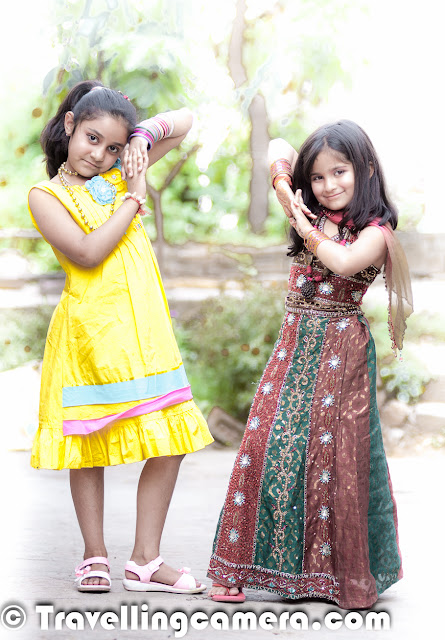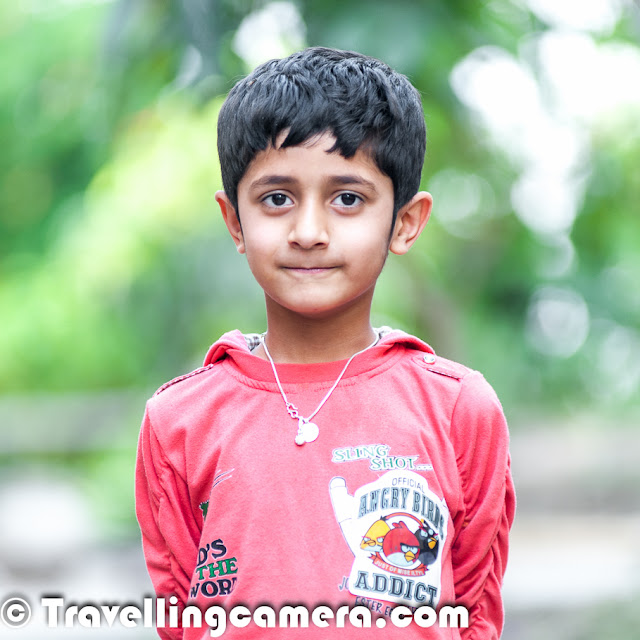Fun filled photo-shoot with Kids in a Himachali Wedding @ Chauntra, Hamirpur || How to click photographs of your kids
It was 2nd April when I was in Himachal to attend a wedding in Hamirpur region around Himalayan State of India. Some of the kids noticed camera with me and after dressing up for some of the ceremonies, they requested me to click some of their pics. One of the girl cutely said that 'I need not to worry about where & how to shoot the pics. They will pose and I just need to press the button :).' This Photo Journey shares some of the quick clicks from this shoot.
Girls were more excited about this photo-shoot and boys were making fun of them by passing different comments, which are not worth mentioning here :).
In this Photo Journey, we would like to share some tips about Kids Photography. And here we specifically want to talk about Science involved, not the art part. Probably we shall talk about Art of Kids Photography with better planned shoot in future.
When we say Science involved, it essentially means and the setup & Camera settings.
I prefer to put my camera into Aperture Priority mode. This lets me have some creative control over depth of field which can be an important factor in portraits. Here we are not going to talk Aperture mode in detail, as I assume that you are well aware of Camera Modes. If that's not the case, please go trough initial posts to know about Aperture Priority Mode or search over internet. By any chance, if your camera doesn’t have aperture priority mode, it might have a ‘portrait’ mode which can be worth shooting in to get those nice fuzzy backgrounds. Usually I set my aperture at f5.6 to start with and decide on appropriate value after experimenting w.r.t. light available and depth of field required. Low f value will throw the background out of focus. If you don't get desired result, don't be stuck here. Keep reading all tips shared in this post and we assure that you will be able to get desired results.
I prefer to put my camera into Aperture Priority mode. This lets me have some creative control over depth of field which can be an important factor in portraits. Here we are not going to talk Aperture mode in detail, as I assume that you are well aware of Camera Modes. If that's not the case, please go trough initial posts to know about Aperture Priority Mode or search over internet. By any chance, if your camera doesn’t have aperture priority mode, it might have a ‘portrait’ mode which can be worth shooting in to get those nice fuzzy backgrounds. Usually I set my aperture at f5.6 to start with and decide on appropriate value after experimenting w.r.t. light available and depth of field required. Low f value will throw the background out of focus. If you don't get desired result, don't be stuck here. Keep reading all tips shared in this post and we assure that you will be able to get desired results.
ISO is another important setting which helps in achieving desired results. Depending upon light conditions we need to ISO. Set it to 200 if there is enough light in the shooting environment. If it is too dark then we tend to increase it upto 800. This upper limit varies from camera to camera. In my Nikon D700, I go upto 1600 which gives good results without pixelation/noise. Idea is to increase ISO only when it's really required and keep the value as low as possible. In case, lighting is very bad and we need to bump it up further. And you get noise, softwares like Adobe Lightroom can help you get away with that.
Since we are using Camera in Aperture more, Shutter-speed will be set by Camera. But it's recomended to keep an eye on the shutter speed that your camera is choosing. Try to keep it 1/200th of a second or faster if you can. And of course, it will depend upon the position of kids. Shutter speed should be fast if kids are moving or distance between camera and kid is more. Again it's a standard game of balancing appropriate values of ISO, Aperture & Shutter-Speed. And if you feel limited and have better aperture lenses, try that. Something like f1.8 would make your life far easier but would bring new set of challenges, which we shall discuss later.
I usually set Auto focus to single point focussing. You could leave it on the multipoint focusing mode but I find with kids that move around a lot that you want to know exactly where your camera is focusing quite precisely. Continuous focusing mode can be helpful in this scenario, which ensures that focus is set properly for moving subjects even when distance is changing.
I am a big supporter of Raw shooting but it depends if you have time to do
some post production work on your images later. As of now we shall not talk much about it in detail.
Usually I avoid using flash for portraits, especially when shooting in very informal setup. But at the same time, I believe that flash can bring an unmatchable drama to your photographs. If you do have an external flash and you’re
shooting inside – bounce it off a roof/wall or try to use a
diffuser to give indirect light. It's a long topic about effective usage of flash-lights along with available light, which will be covered in a separate post.
Many times, I have seen folks worrying too much about cameras and lenses. And many of the above things can't be done with your camera, just chill and leave a comment with your specific queries. We shall respond back with appropriate solutions specific to your equipments. I personally love to use my 70-200mm lens which enables me to
shoot from a distance. But I love experimenting ith different types of lenses. Even Wide lens can make life more exciting if environment allows you to do so.
At the end of all that, the most important is to capture right moments at right time. It's OK, even if you miss on some of the settings we talked. Happy Clicking !!!

.jpg)


.jpg)
.jpg)
.jpg)
.jpg)
.jpg)
.jpg)
.jpg)

.jpg)